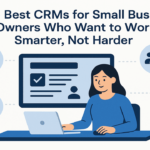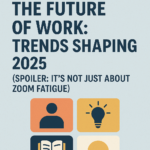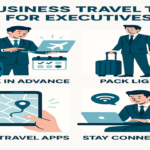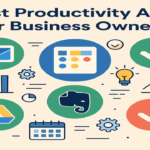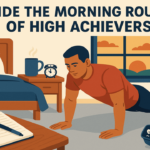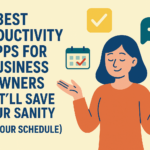Business casual attire is often regarded as a professional but laid-back look. However, depending on the organization, the temperature, and the culture, definitions of “business casual” might differ.
Business casual sounds like music. After all, you won’t have to worry about what to wear to work if you follow this dress code. That’s not the case.
In truth, this dress code policy is frequently misunderstood by employees. It’s not their fault; there isn’t a standardized, clear definition. Business casual can signify other things in different firms, locales, and industries. It is, furthermore, deciphering the slight variations between “casual” and “business casual.”
What is business casual attire?
What does it mean to be “business casual” these days? If you’re 23 or 63 and work for a bank or an internet company, that phrase will be defined differently. However, no matter who you are or where you work, the terms “casual,” “business casual,” and “formal” are very much standardized in the workplace, and it’s critical to understand the differences!
Some employees may consider their company’s dress code outdated and out-of-date. They may claim that the quality of their work should be appraised rather than how they dress. Experts advise being realistic. In the real world, professionals are judged based on their clothes, whether consciously or unintentionally. So don’t allow your attire to be why you don’t obtain a raise or a promotion.
Creating and imposing business casual attire for work
According to the OfficeTeam poll results, employees are genuinely interested in wearing suitable professional clothes to work. This business casual dress code’s specific recommendations will assist them in making these judgments. Have you tried and failed to impose a dress code in the past? This frequently occurs when employees are not involved in creating the regulations. They also fail when they are poorly managed and applied. Here are some ideas for making the new dress code a success.
A sample business casual dress code
The goal of adopting a business casual dress code at your company is to allow our employees to work in comfort. Yet, we still require our personnel to present a professional image for our clients, potential employees, and community visitors. The standard for this dress code is business casual.
These recommendations will assist you in determining what is appropriate to wear to work because not all casual attire is suitable for the office. Beachwear, yardwork, dancing clubs, workout sessions, and sports competition attire may not be ideal for a professional look at work.
Clothing that exposes too much cleavage, your back, your breast, your feet, your stomach, or your underwear, even in a business casual atmosphere, is not appropriate for a place of business.
It should be ironed and never wrinkled, even in a business casual work atmosphere. Clothing that is ripped, unclean, or torn is not appropriate. All seams must be sewn together and completed. Any attire that contains derogatory words, terms, or images for other employees is prohibited. It is encouraged to wear clothing with the corporate logo on it. Dress with the names of a sports team, a university, or a fashion brand is often appropriate.
Fridays, in particular, might be designated as dress-down days. Jeans and other more casual wear are permitted these days, albeit never clothing that could insult others.
Guide to dressing for work
This is a general summary of what to wear for business casual. There are also items on the list that aren’t fit for the workplace. Neither list is exhaustive, and both are subject to revision. The lists show what is and isn’t considered business casual.
Business casual workplace attire
Slacks or khakis, dress shirt or blouse, open-collar or polo shirt, optional tie or seasonal sport coat, knee-length or lower dress or skirt, tailored jacket, knit shirt or sweater, and loafers or dress shoes that cover all or most of the foot are standard business casual attire.
What is business casual men?
- Colored, collared button-ups in any hue are acceptable. Conservative patterns like checks or stripes, worn with or without a tie, are also suitable.
- The pattern of ties should remain conservative. Choose patterns like dots, stripes, or checks instead of novelty ties. The majority of hues are acceptable.
- Over collared shirts, pullovers and sweaters are worn. Choose a solid, striped sweater that has a conservative design. The most fabulous colors are primary and jewel tones.
- In the summer, dressy slacks are worn with or without a sports jacket, such as black dress pants or pressed khakis.
- Shoes in brown or black can be oxfords, loafers, or comfortable yet dressy options. Avoid wearing sneakers.
What is business casual women?
- Wear business separates instead of a full suit, such as a skirt with a cardigan or jacket.
- Instead of necessary collared button-downs, colorful shirts and blouses are worn. Avoid low-cut shirts and flashy designs in favor of solid colors or muted patterns like stripes or checks.
- Khakis and slacks.
- Statement necklaces or huge cuff-style watches are examples of larger jewelry. It doesn’t have to be of the best grade; gemstones and other common materials will suffice. Scarves are also a good option.
- Comfortable flats and loafers, as well as pumps, are acceptable, but they must be closed-toe. It can be any color. However, black, brown, red, navy, and gray are the most suitable colors.
Formal workplace attire
You may be requested to dress in “business formal” or “boardroom clothing” if you work in law, banking, or finance, routinely meet with executives or otherwise hold a high-level position. This is the pinnacle of professional attire.
For Men:
A fitted suit in a solid, neutral color like black, gray, or blue with one, two, or three buttons.
Ties and other accessories should be modest in color and style, with solid, bolder colors (like a red tie) or patterned muted neutrals (like a blue plaid tie) – as well as high-end in quality. Novelty ties, such as sports team patterns, are not permitted.
Shirts with a white collar and a button-up front.
Closed-toe oxfords in brown or black, not loafers, should be worn.
For Women:
In a well-cut pantsuit or skirt suit, a conservative, neutral color, such as black, navy, or brown.
Button-up shirts in white with a collar.
Heels with a closed toe in a neutral color like taupe, black, gray, or brown.
Accessorize with conservative jewelry and accessories.
Are shorts acceptable for business casual?
You’ve made it to another casual Friday at your casual workplace! We recognize that this is your opportunity to push the boundaries of professional style, and we want you to look fantastic. With the heat on, you might be eyeing your shorts in the morning, wondering if you’ll be “that man who wore shorts that one time,” or if you’ll be instantly labeled “that guy who wore shorts that one time.” Here’s how you may show your legs at work without sacrificing your dignity.
Be sure
Many employers will send out messages on office dress standards around the year. Sometimes there will be a bolded sentence from your human resources coordinator that specifies what’s going on below the waist. You can stop reading now if it says no shorts. Please don’t break the law when it comes to human resources. Read your cubicle field and consult your coworkers with good taste if it’s not explicitly stated. If you’re clear after that, go ahead and proceed.
Assess your day
If you have a big meeting with clients, managers, or other big wigs coming up, you should play it safe. Keep your pants on, guy. Even if your usual workday allows for some loose-fitting shorts, you want to look your best when you’re supposed to. Save the shorts for a day when you want to relax.
Make them nice
Shorts are frowned upon in the workplace because they are too informal and can be unprofessional. And they have every right to be! That is if they are cargo shorts with tattered bottoms. Choose something fitted that resembles short pants rather than shorts. Remove the cargo pockets and adjust the length of the pants to just above your knees. There will be no fraying!
Wear a collar
We love shorts and T-shirts and T-shirts and jeans, but when the informal quotient is doubled, you’re in the weekend territory. For professional shorts, the only acceptable above-the-waist move is a collared shirt. However, because this isn’t a country club, we’d leave the polo shirt and shorts at home. It’s entirely up to you whether or not you tuck your shirt in, but it will appear a little more beautiful if you do. Put on a light cardigan or jacket if you want to dress it up (like the godfather of shorts, Thom Browne).
Avoid sneakers
This is similar to the T-shirt concept. Putting on a pair of sneakers, even a straightforward and cheap pair makes things way too relaxed. Put on a pair of double monks, a pair of drivers, or a pair of loafers. Only suede and leather are allowed.
Treat your legs like your face
We’re guessing you take good care of your face. You maintain it clean, manicured, and clear of blemishes as much as possible. You should think about your legs the same way if you’re going to show them off to the world. If you’re covered in bruises from mountain biking, have dry skin, or have tan lines, this might not be the best choice for you. Remember, you’re attempting to provide an attractive product as a whole.
Steer clear of prints and patterns, everywhere
Shorts that are both substantial and dark are recommended. However, you should avoid loud prints in other areas as well. Dude, you’re not on vacation! With suits, prints may be artistically mid, but we recommend keeping things basic when it comes to shorts. Anything less than subtle is OK, but anything more reads as “leisure time.”
Can you wear jeans in business casual? Yes, No, Maybe So
The term “business casual” has always been a bit ambiguous. It varies so much from office to office, and if you’ve ever been new to a company with a strict dress code, you’ll understand the fear that comes in as you try to figure out what you should be wearing. Is it acceptable to wear jeans to work? Should you stick to a classic pump or go for something a little more unique?
After a season or two, you’ll develop a sense of what’s acceptable and what’s not, but until then, read on to find out what’s undoubtedly acceptable and what’s never appropriate, as well as some suggestions for things to try as you gain a feel for what “casual” really means.
Jeans
Assuming that denim is authorized (hint: don’t just check the employee handbook—look around), well-tailored (wide leg or boot cut), dark-washed, or dressed-up jeans are always a go (with, say, a pair of heels or a silk blouse).
If you work in a more relaxed environment, opt for white jeans (in style all year!) or denim with a light pattern.
Don’t even consider it: Anything torn (on purpose or not), stretched out and baggy as a result of misuse, or slung so low that you’re afraid to sit down at that meeting.
Colors
Neutrals, such as black, white, navy, tan, gray, and brown, are always in vogue and always boss-approved.
Bolder hues (cherry red or royal blue), jewel tones (emerald or plum), or pastels are all possibilities. You may even go for a color blocking look: Stick to one color palette (for example, jewel tones), then select separates that are various colors within that category (for example, a skirt, shirt, and blazer).
Don’t even consider it: Stick to no more than three colors at a time to maintain your look professional and pulled-together. On the other hand, head-to-toe brights or prints are always a no-no.
Find out whether your job leans business or is more inclined to casual
Not every industry, not every company, understands the business casual dress code in the same way. As a result, you’ll have to find out what business casual means at your place of employment.
Like the technology industry, some businesses enable you to dress a little more casually. Others, such as fashion and possibly some agencies, expect you to be innovative. Finance and the service industry, on the other hand, have more stringent regulations.
This is why you should learn about the business casual dress code and how it applies to your work, organization, and industry. If you’re unsure, it’s best to overdress until you know what to anticipate.
Similarly, you should always dress professionally for a job interview, even if the individual conducting the interview is not dressed professionally. When attending an interview, keep in mind that you should dress to impress.
When the dress code states business casual, you’re good to go with jeans
Anyone who establishes a business casual dress code – whether for a workplace or an event – anticipates seeing jeans. If they don’t want to see jeans, they should put a disclaimer on the invitation that says “no jeans” or change the dress code to Business Professional or Business Formal.
Why jeans became business casual?
Businesses in the United States realize that allowing people to be themselves is good business. If a person feels more like themselves in jeans than in khakis or trousers, they’re more likely to be happier—and more productive—at work.
As a result, American business culture is swiftly developing to tolerate jeans, but you must know which jeans are good for business casual (and which jeans are not).
Business leaders wear jeans while doing business
The appearance of Steve Jobs in jeans on stage to announce Apple goods was a watershed moment in the acceptance of jeans in business settings. Today’s business leaders, Jeff Bezos and Mark Zuckerberg wear jeans when presenting business ideas to the globe.
The reason for this is that wearing jeans makes you more relatable to your audience—and your peers.
The attention of major corporations and sectors has been drawn to this issue. In 2019, Goldman Sachs, a financial services firm, began allowing employees to wear jeans to work. Law firms are adopting dress for Your Day across the United States, which means you can wear jeans when it’s appropriate.
Dress and Self-Perception: Impact of Clothing on Individual Identity
Dressing influences how we perceive ourselves distinctively, drawing from Bem’s self-perception theory (1972). Bem posited that our self-judgments mirror our evaluations of others, often derived from observed behaviors and self-produced cues.
Kwon (1994) explored workplace attire’s psychological effects without altering clothing styles directly, prompting participants to envision feelings associated with appropriate versus inappropriate dress. Rafaeli et al. (1997) linked professional attire to enhanced self-confidence and capability, contrasting psychological discomfort with improper attire.
Adomaitis and Johnson (2005) found flight attendants in casual uniforms felt less authoritative and confident. In contrast, Peluchette and Karl (2007) reported formal business wear enhanced perceptions of authority, trustworthiness, and productivity. Karl et al. (2013) further detailed how attire influences feelings of competence and creativity.
Future research should explore how evolving workplace attire norms impact perceptions of competence and authority. Additionally, investigating fit’s role in self-perception and presentation remains crucial.
The fashion industry’s oversight of plus-size clothing complicates self-perception for many women, as reported by Huffington Post (2013). Plus-sized individuals often feel neglected and struggle to find trendy attire that aligns with their desire for fashionable expression.
Understanding these dynamics is essential for addressing challenges in self-presentation through clothing, ensuring inclusivity and confidence across diverse body types and fashion preferences.
The bottom line
Now that you understand what business casual entails, it’s time to embrace your freedom in choosing attire while ensuring it aligns with company guidelines. Strive for a stylish yet professional look that respects workplace norms. Your outfit plays a crucial role in shaping how others perceive you, so always consider your choices carefully to make a positive impression.


